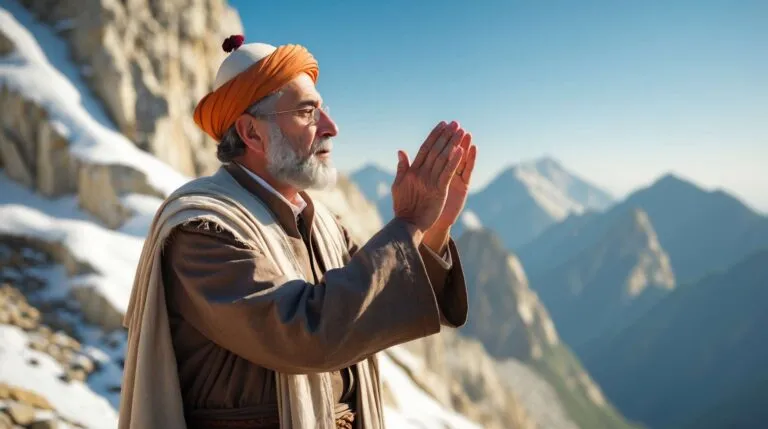The discussions surrounding the Jewish calendar controversy are fascinating and complex, which shows how far ahead our sages were of their time.
This post won’t be so much about Kabbalah, but it’s a very interesting topic nonetheless as we see the far-reaching implications of the sage’s discussions.
Picture this:
A pivotal moment in this history occurred in 921-922 CE, when a significant dispute arose between the Jewish communities of Israel and Babylonia over the calculation of the calendar. This disagreement led to these communities, and subsequently others in the Near East, observing Pesach and Rosh Hashana on different dates in 922.
This dispute was long considered by modern scholars as the last major disagreement of its kind within Orthodox Judaism, with the triumph of the Babylonian side leading to the finalization of the rabbinic Jewish calendar. But the calendar controversy was far from over.
Some recent research has been found that has challenged this view, providing new interpretations of the calendar controversy and its long-term impacts on the standardization and fixation of the Jewish calendar in the medieval world.
Introduction to the Hebrew Calendar
The Hebrew calendar, as it is used today, is a lunisolar calendar, determining the dates of Jewish holidays and other rituals. It was originally based on physical observation of the moon of the next month and agricultural events in ancient Israel. Between 70 and 1178 CE, these empirical methods were gradually replaced with mathematical rules (from Wikipedia).
The calendar now follows a fixed schedule, adjusted based on the molad interval (a mathematical approximation of the time between new moons) and other rules, with leap months added in 7 out of every 19 years according to the Metonic cycle. The current Hebrew year is counted according to the Anno Mundi system, which attempts to calculate the number of years since the Creation of the world.
Another intriguing aspect of the Jewish calendar’s evolution is the alternative calendar system known as the Iggul of Rav Nahshon Gaon, which existed alongside the normative rabbinic calendar until the end of the medieval period and beyond. This system assumes that the Jewish calendar repeats every 247 years, allowing for a calendar calculated for this period to be reused indefinitely.
Despite its non-standard nature, this 247-year cycle enjoyed considerable popularity due to its convenience, and over 200 sources on this cycle from various parts of the Jewish world were discovered. This research sheds light on the production and use of these cycles, their impact on calendar controversy, and the attitudes of scholars and rabbinic leaders towards them (source here).
Now, to be fair, I’m not sure about these 200 sources as I haven’t checked them myself, but my point here is merely to bring these ideas to light as it affects us in a very real way. Not only so we know the dates of the festivals, but… are we even counting history properly?
The Evolution of the Jewish Calendar: A Historical Perspective
In the annals of Jewish history, the evolution of the Jewish calendar stands as a significant chapter, particularly regarding the transition from eyewitness moon sightings to a fixed, calculated system. This shift was necessitated by increasing persecution in Eretz Yisrael. We all know the Samaritans were messing up the sightings and lighting bonfires to signal they’ve seen the new moon so the Jewish sages could proclaim Rosh Chodesh.
Chazal crafted a self-perpetuating calendar system, designed to endure until the Messianic era. Rav Hai Gaon, a prominent scholar, chronicled that Hillel HaSheni (Hillel the Second) was instrumental in this transformation during the fourth century C.E. (4149/359). This pivotal change in Jewish timekeeping coincided with a turbulent period marked by Constantine the Great’s endorsement of Christianity and the culmination of the Talmud Yerushalmi by Rav Manna and Rav Yossi.
However, it’s important to note that while Hillel II laid the foundational rules, the calendar as it is known today wasn’t fully established until the 11th Century. This final form emerged following a significant controversy led by Rav Ben Meir and Rav Sa’adyah Gaon.
And that is the subject of our post.
From Unity to Disunity
Rav Ben Meir was a leading rosh yeshivah in Eretz Israel, tracing his lineage back to Rabban Gamliel and Rabbi Yehudah HaNasi. Initially, his efforts were focused on unifying Eretz Israel and Bavel against the Karaites. However, during the calendar dispute, two factions existed in Bavel: the Pumpedita yeshivah, led by Rav Mevaser Gaon, and the group aligned with the Reish Galuta, R’ David ben Zakai.
The controversy centered around the Rosh Hashanah of 4684/923. According to the Gemara (Rosh Hashanah 20b), if the molad (new moon) occurs after midday, Rosh Chodesh must be deferred to the following day.
Calculations showed the molad of Rosh Hashanah 4684 would occur shortly after midday on a Shabbos, which would normally push Rosh Hashanah to Monday. However, Rav Ben Meir, citing a tradition, argued that the molad could be up to 642 chalakim (approx. 35 minutes) after noon without delaying Rosh Chodesh. Thus, he believed Rosh Hashanah should remain on Shabbos.
This stance, unfortunately, lacked a clear rationale and differed from the practices in Bavel. Historical records, including the Maharshal’s commentary on Bava Kama, highlight numerous variances in customs between Eretz Israel and Bavel.
For example, the cycle of Torah reading differed, as did practices like the recitation of Kiriat Shema.
As we see, the calendar controversy has a lot more ramifications than “calculating the date”.
The Calendar Controversy Intensifies
Rav Ben Meir’s challenge to the established calendar posed a threat to Jewish unity, potentially leading to different observance dates for Yamim Tovim. He argued that since Eretz Israel was the traditional seat for determining the calendar, his decision should be globally accepted.
This claim was refuted by Rav Saadyah Gaon, who stated that Eretz Israel never held exclusive rights over the calendar. The Rambam, in Sefer HaMitzvos (Aseh 153), interestingly leaned towards Rav Ben Meir’s view, suggesting the calendar’s base should be in Eretz Israel.
As the debate escalated, Rav Ben Meir took proactive steps, declaring Pesach would start two days earlier in 4682/922 and sending notifications to communities in Egypt and Bavel.
This move, however, was met with resistance.
Rav Saadyah Gaon’s Counterattack
Rav Saadyah, upon learning of Rav Ben Meir’s actions, strongly opposed the change.
He garnered support from the Reish Galusa and other Geonim, emphasizing the need to adhere to established halacha. Rav Saadyah’s letters, including those to his students in Egypt, urged adherence to traditional calendar calculations and warned against the dangers of altering sacred observances. He emphasized the sanctity of Jewish festivals and the imperative of unified observance.
Despite Rav Saadyah’s efforts, Rav Ben Meir remained adamant. He sent his son to Jerusalem to reinforce his position, arguing that Eretz Israel’s sages held the authority over calendar matters. Rav Saadyah countered this claim, emphasizing a shared responsibility across Jewish communities.
The Rambam’s Perspective
The Rambam, in his writings, provided a nuanced view. While he acknowledged the importance of Eretz Israel in calendar determination, he also recognized the practical realities of the Jewish diaspora. This balanced perspective highlighted the complexity of the issue and the need for a consensus approach.
Resolving the calendar controversy
The calendar controversy culminated with the arrival of Pesach 4682/922. Communities in Eretz Yisroel, Egypt, and a minority in Bavel observed the festival according to Rav Ben Meir’s calculation.
However, this divergence was not sustainable. To prevent future conflicts, the Geonim tasked Rav Saadyah with composing the “Sefer HaZikaron” (Book of Remembrance). This document, read annually on the 20th of Elul, served as a reminder of the dispute and a caution against similar occurrences.
By Rosh Hashanah 4684/923, the matter was largely settled, with communities realigning with the traditional calendar.
Rav Saadyah’s Recognition
In 4688/928, Rav Saadyah was appointed as a Gaon by the Reish Galusa, David ben Zakai, partly in recognition of his role in resolving this significant dispute. This appointment not only honored Rav Saadyah’s scholarly contributions but also marked a moment of reconciliation and unity within the Jewish community.
Legacy and Reflection
The calendar controversy of the 10th century serves as a testament to the dynamic nature of Jewish law and the enduring commitment to communal unity. It underscores the delicate balance between tradition and adaptation, and the pivotal role of leadership in navigating complex religious and communal challenges.
I guess we can also make a point that “wherever we have 2 Jews, there are 3 opinions”, but on a more serious note, it’s very interesting to see how something so seemingly innocuous mushrooming into a full-blown discussion.
But, of course, this is all for the sake of Hashem, the Torah and the Jewish nation.
And so we honor the holy Tzaddikim that participated in it.







